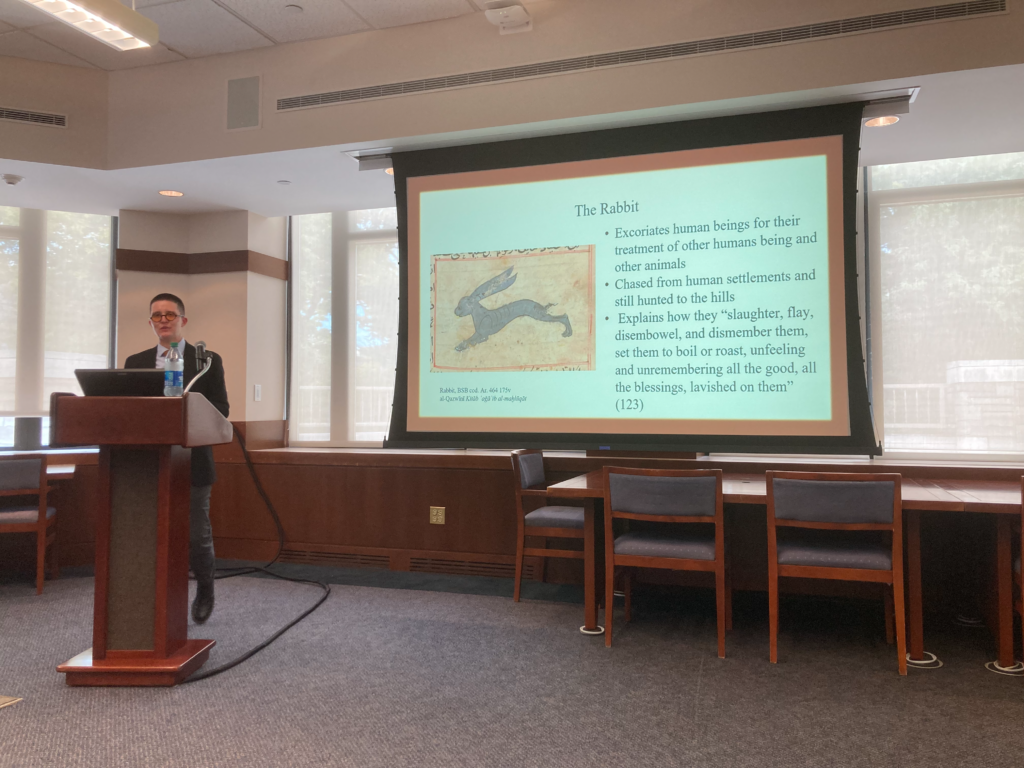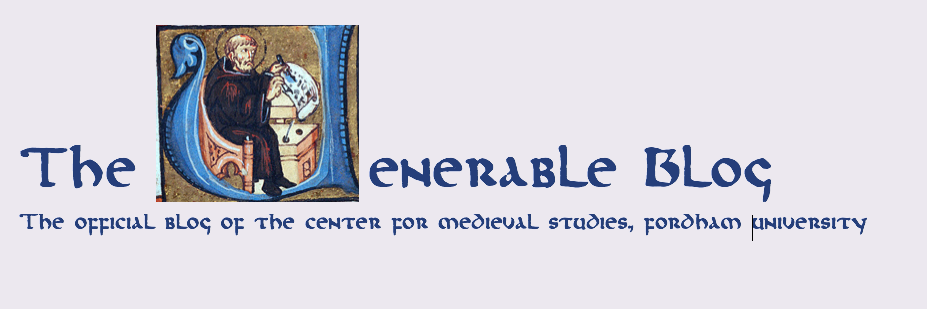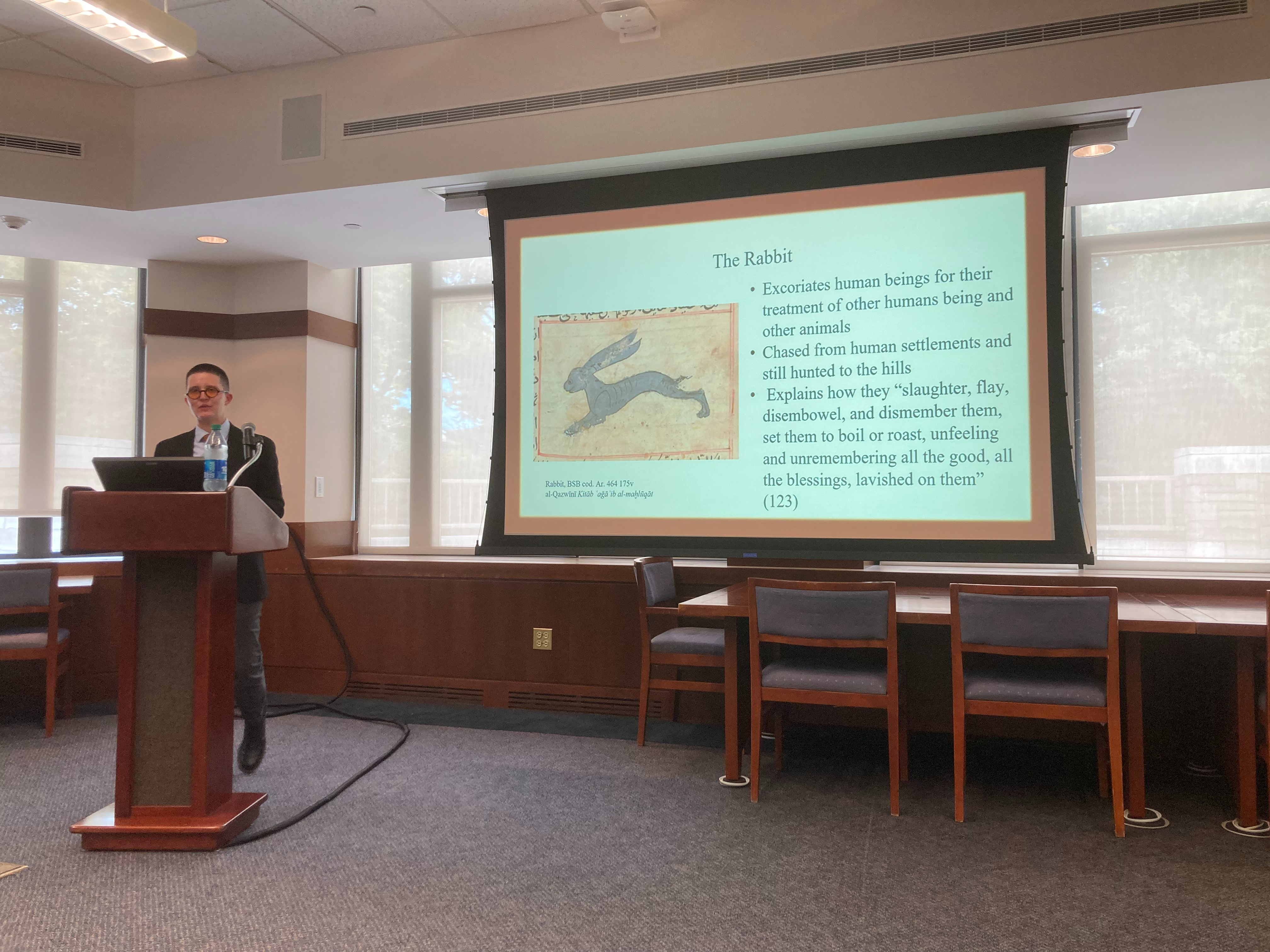
On Thursday, October 12, 2023, the newest Medieval Studies faculty member, Dr. Bligh Somma from the Philosophy Department, delivered a lecture on the role snakes, eclipses, and a philosophical discussion of the microcosm had to play in the Islamic text of the Iḫwān al-Ṣafā’.
Dr. Somma obtained their PhD from Ludwig Maximilian Universtät, München and Duquesne University, in 2018, with a focus on the philosophy of science and the philosophy of religion. Dr. Somma specializes in the philosophy of ancient Greece and the Islamic world in the 8th-14th centuries, as well as the philosophy of animals, disabilities, and adoption.
Beginning with an introduction to the Iḫwān al-Ṣafāʾ (translating to “brotherhood of the blessed”), Dr. Somma provided some context for the work, explaining that it is a product of a group of thinkers from Basra and Baghdad between the fourth and tenth centuries. The epistle at the forefront of Dr. Somma’s talk – the 22nd – is one of 52 epistles produced by this group. Allegorical and symbolic at once, it follows a debate between humans and animals, wherein the animals argue that they should be liberated from the humans who have rendered them subservient. In order to do this, Dr. Somma explained, the animals present their case by enumerating their merits and how humans have overreached. The ensuing discussion revealed by Dr. Somma revolved around the categorization and proper placement of beings in the cosmic hierarchy created in the epistles. Ultimately, animals and humans are compared against their distances from divinity using a language of goodness. The epistle considers snakes’ benefit ambiguous to other animals because of their venom. Despite their apparent harm as venomous predators, the 22nd epistle determines that they were created for the general good, as according to the epistle, snakes act by their nature. This is presented in contrast to humans, who have more potential for good than snakes, but often sink below snakes in their brutality. Dr. Somma highlighted the parallel between the imperfection of snakes and the sun and moon, which if not for eclipses, would shine nearly perfectly. Just as the sun and moon suffer eclipses, so too are humans not perfect. Here, Dr. Somma explained, the epistle redeems humans according to the cosmic hierarchy – not as good as the sun and moon, but when vicious, worse than snakes. In this way, Dr. Somma explained, the 22nd Epistle’s discussion of human goodness is captured in microcosm.
Those who are interested in what Dr. Somma covered in their lecture should stay tuned for their forthcoming article in the January 2024 edition of the Journal of the History of Philosophy, entitled, “The Brethren of Purity on Justice for Animals.”
For updates and information on future events, follow us on Facebook and Instagram!

